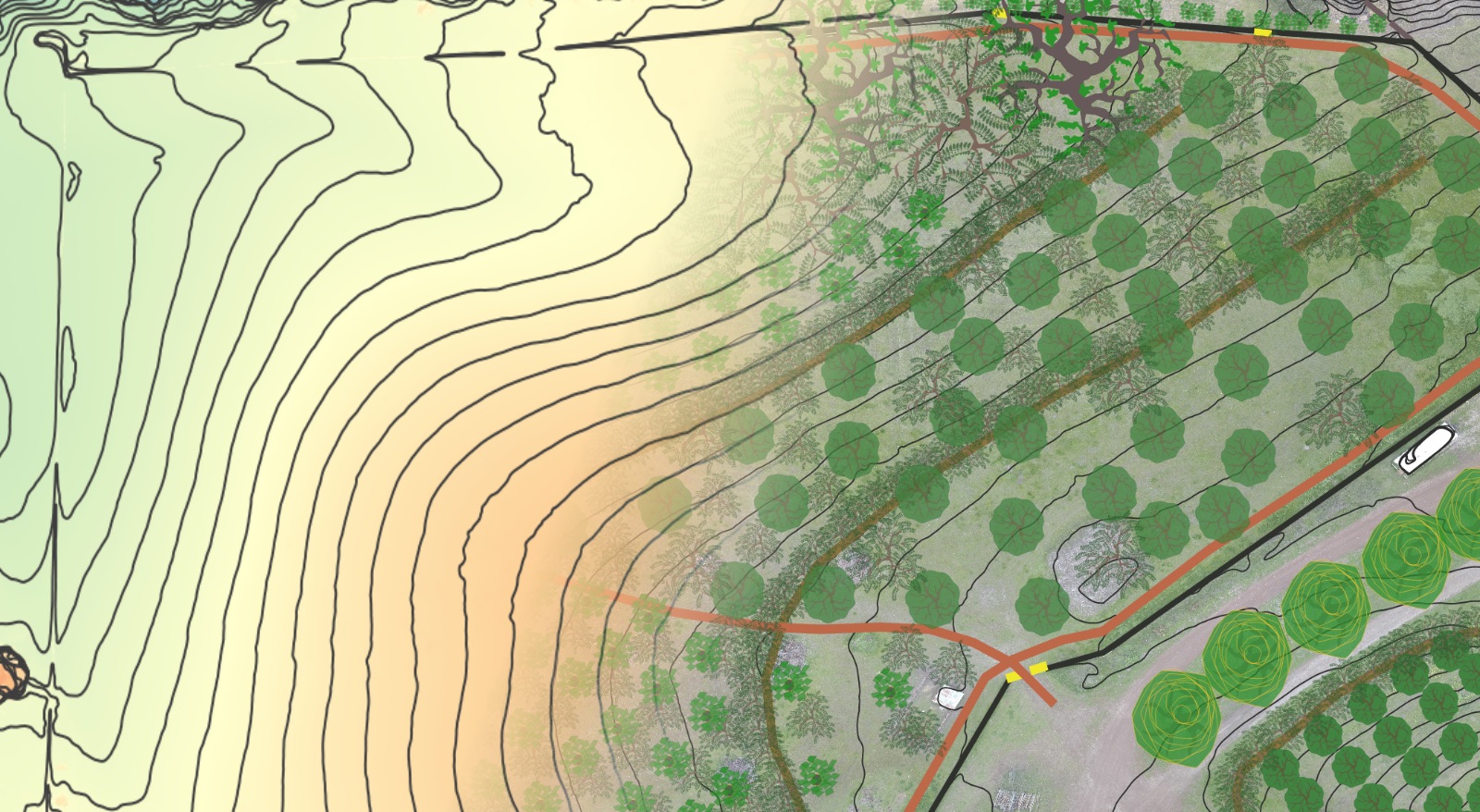Your cart is currently empty!

Water Harvesting Earthworks & Primary Access Design
Client Vision And Goals: To create an ecologically regenerative, financially abundant and systemically resilient farmstead producing both high-value niche commodity crops (truffles, elderberries) as well as a diversity of food for personal consumption by raising pastured ruminant livestock, fish and ducks in multi-species “pantry ponds” and perennial and annual plant foods from tree crops, crop gardens and edible landscaping. The land has been taken from and neglected for a long time, and a foundational piece of their vision is to heal it’s relationship with the people living on and around it.

Design Elements
- Water
- Addition of new ponds daisy-chained together to maximize water storage capacity and productive aquatic systems. This includes…
- A saddle pond high in the landscape to serve as the primary water harvesting engine. This pond will have a surface area of .75 acres, a storage volume of ~700,000 gallons and will harvest surface run-off from just over 16 acres of ridge catchment that would otherwise flow off the property with the assistance of a road swale (see Access below) and two additional catchment swales.
- Remodeling and resealing the old Barn Pond to effectively hold water. This will be the second pond in the daisy-chain of water storages.
- Additional storage and aquaculture ponds, all linked with managed overflows, to hydrate and surface irrigate the lower mixed orchard plantings in the lower northwest field.
- Energy dissipation structures such as small zuni bowls to dissipate the energy of high-velocity culvert flows within the incised drainage channel separating the two halves of the property to prevent further incision, top soil loss and dehydration. A vehicle access road will be constructed across this area to link the two halves of the farm once the drainage is stabilized.
- Livestock watering main lines to maximize pasture utilization and facilitate year-round rotational grazing.
- Drainage features including rolling dips, armored and unarmored drains and an armored fill crossing to move water off road surfaces and into appropriate storages or infiltration structures while maintaining vehicle access capability even during inclement weather.
- Addition of new ponds daisy-chained together to maximize water storage capacity and productive aquatic systems. This includes…
- Access
- Patterning of mainframe vehicle access throughout the property, including:
- Creation of vehicle access across the seasonal drainage separating the two halves of the property.
- A 1760′ long road swale that will serve as dry-conditions vehicle access to the northern pastures while simultaneously functioning to harvest water from over 8 acres of hilltop catchment area that would otherwise run off the landscape and into the currently incised drainage.
- Additional vehicle access across dam walls and following edges between management zones to enable efficient movement of people and materials throughout the landscape.
- Public access driveway leading to the farm building, along with parking for customers and delivery vehicles.
- Vehicle Recommendation: a mini-dump truck will serve the required functions on the farm much better than typical UTVs.
- Patterning of mainframe vehicle access throughout the property, including:
- Structures
- Location and orientation for a public-facing farm building where produce is processed, packaged, and shipped to customers.
- Living Systems
- Pantry ponds – integrated production systems stacking yields of fish, ducks, duck eggs, aquatic and terrestrial vegetables.
- Silvopasture paddocks designed to create a year-round “grocery” for grazing animals to increase available calories during shoulder seasons, enhance animal welfare and reduce requirements for externally sourced feed inputs.
- Elderberry orchard located in a low-lying field that stays relatively wet throughout most of the year. Elderberry guilds include nitrogen-fixing shrubs and groundcovers designed to fertilize the elderberry trees and provide feed for grazing livestock, as well as pollinator and beneficial predator insectary plants for integrated pest management.
- Truffle orchard to serve as the primary cash crop for the farmstead.
Existing Conditions vs. Design Map


Existing Conditions Gallery
Phase 1 Earthworks Design Map
Saddle pond with 2,500 feet of road swale encompassing 8.2 acres of hilltop catchment area. Additional secondary “Dwarchard” swale will capture run off from an additional 1.9 acres and serve as an emergency overflow for precipitation events slight greater than the 1 year intensity recurrence interval. An adjustable Agri-Drain flow control tower will be installed to allow the owners to manage water levels precisely and discharge overflow for any precipitation event less than or equal to 1 year intensity recurrence interval.




